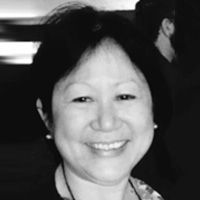Ondoy and Carina


I thought it would not happen again, but it did. And for the second time, we were - again- not prepared.
When Ondoy or Typhoon Ketsana hit us in September 2009, it became the second most devastating tropical cyclone, causing $1.15 billion in losses and 665 fatalities. It was the first typhoon that really flooded and brought Metro Manila to a halt, and clearly we were not prepared for the amount of rainfall it brought.
This time around, however, we have to partially blame ourselves because we assumed that since Carina was not a super typhoon when it passed us, or even a particularly strong typhoon, it would not bring as much rainfall especially since it did not even actually make landfall in the country.
In fact, PAGASA explained that the rainfall that accompanied Carina was due to the enhancement of the monsoon rains.
But then there’s the rub, the weather bureau – PAGASA-DOST on Tuesday just issued a bulletin for slight to moderate rainfall. Is it really difficult at this point to accurately measure, calculate, how much rain a weather system will bring? Isn’t it a science to be able to give a fair assessment so that the public can prepare?
Perhaps going forward, PAGASA should also include a precipitation chart or graph on the estimated rainfall ahead just to impress on the public that floodwaters could quickly rise, because evidently the disaster that hit us this time around is due to flooding rather than wind damage.
We were all likewise lulled into a sense of complacency since we had seen the Department of Public Works and Highways (DPWH) undertake and complete a series of flood control projects that has resulted in some success with the quick subsiding of floodwaters.
What is unusual though is that despite the new flood control projects, the flood this time around did not recede as fast in Manila. Could it have been affected by the reclamation projects in Manila Bay? Were there adequate studies to ensure that flood flow would not be impeded from being quickly diverted and released to Manila Bay?
Yet again, in the Philippines, we were caught under-prepared and still woefully under- equipped with rescue boats and trained rescuers, even as we announce to the world that we are a climate change victim and should get compensation to be able to equip ourselves to better deal with the climate disasters (first El Niño and now the heavy rains) that regularly hit us.
Whatever happened to plans after Ondoy devastated us to equip LGUs with rescue boats?
The government, through the LGUs, still has not implemented an effective local warning and evacuation system for communities in low-lying and flood prone areas, except perhaps for Marikina.
Initial news reports revealed that there were only about 25 rescue boats that were constantly being waylaid by desperate victims and could thus not properly respond to systemic and organized rescue operations. Local disaster response unit hotlines were also reportedly not answering calls.
Preventing and effectively minimizing damage and loss from flooding would cost so much less than dealing with the loss of lives, property and businesses, and the high cost of rebuilding/repairing damaged infrastructure after the flooding.
On the other hand, the government is so quick to create, allot and spend millions for managers of a sovereign wealth fund whose benefit will still be years to come, when prioritizing mitigation measures to prevent recurring natural disasters would benefit the economy more.
The economy is still struggling, and dealing with another climate disaster will make it harder for all of us to recover, with inflation barely controlled.
Of course, the government is not solely to blame because we, as a people, still do not give much importance to climate change and ensuring our own safety by conscientiously not clogging up our drainage system with our garbage or ensuring that our construction activities do not impede the natural flow of our waterways.
Likewise, most households continue to live day to day without any viable self rescue plan, thus, when a disaster hits, chaos ensues.
It should also already have been ingrained in all of us that climate change has changed weather patterns, and natural disasters are now stronger and more damaging.
The knowledge is readily available now, and yet it is not properly taught to the community and disseminated. I wonder how much government funds are actually allotted for disaster preparedness and prevention, and if they are at all properly accounted for and goes to what is needed.
We should all keep in mind what American founding father Benjamin Franklin famously advised fire-threatened Philadelphians in 1736, “An ounce of prevention is worth a pound of cure.”
- Latest
- Trending




























